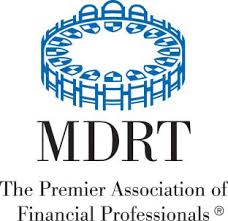(Click Image to view original article)
Money Matter by Chelan David
Expect the Unexpected
Protecting the continuity of your business means preparing for the worst .
Most spa owners don’t incorporate death into their business plans, nor do they plan on losing key personnel. But in the event that the unthinkable happens, it’s important to have a safety net in place.
Key-person insurance and buy-sell agreements are two safeguards to consider. They help ensure stability in the event that an integral employee or partner is lost.
Covering Key Employees
It’s a common refrain that the most valuable assets of a business are its workers. Yet while few spa owners
would throw caution to the wind by neglecting to insure their physical assets, many opt not to cover their most critical employees. However, the loss of certain staff members can be devastating to a day spa: Sales may languish; morale can deteriorate; credit can be hard to come by; and money must be reallocated toward finding a replacement.
Key-person insurance is designed to protect a business by minimizing disruption to its cash flow in the case of an untimely death. In essence, it’s a life-insurance contract on a vital employee. The employer pays the premiums and becomes the policy’s beneficiary upon the insured’s death—if such an event occurs. The benefits are received tax-free and can be used at the employer’s discretion.
“The loss of a vital worker is a traumatic event—emotionally and financially,” says Karen Susac, director of advanced markets at Symetra Financial (symetra.com). “Businesses need insurance to weather the financial storm that this kind of death can bring. It guarantees that the company has funds when they’re needed, and that the process of obtaining them is efficient and cost-effective.”
Among other things, the settlement can be used to cover the loss of sales or revenue generated by the employee and fund a search for a suitable replacement. “Keyperson insurance can mean the difference between closing the doors and having the cash flow necessary to continue operations while searching for someone new to take on that same role,” says Michael E. Gray, Jr., president of MEG Financial (keyperson
insurance.com).
Casting the Safety Net
When designating a key employee to insure, the most important question to ask is: Will the loss of this person impact revenue?
Although owners or partners are typically identified as critical employees, key-person insurance can cover any worker who’s vital to a day spa’s success. Some employees represent a business to its core and have established deep relationships with customers and vendors. Others may perform an essential task that would be hard for a new hire to immediately replicate. (Think about it: What would happen to your business in the short term if your most popular massage therapist were suddenly no longer able to perform her duties?)
“If there’s someone in the company who’s vital to its success, then she should be covered,” Gray says. “For example, a salesperson responsible for a large percentage of revenue needs to be insured.”
Another important consideration when obtaining key-person insurance is deciding the amount the policy should cover. There’s no magic formula for determining the value of an important employee. However, anticipated revenue losses, replacement costs and training issues factor into the equation. Some questions to ask include:
- Will the loss of the employee correlate with a reduction of clientele?
- How much will it cost to search for and hire a replacement?
- How long will it take for the replacement to become as competent as the previous employee?
- How many mistakes and how much lost business will occur during the training period?
Ultimately, a spa’s owner or management team needs to make the appropriate determination about an employee’s value. However, Susac provides a reference point from which you can work. “A good rule of thumb is 5 to 10 times her annual compensation,” she says.
Whomever you designate, it’s important to provide evidence of the value she brings to the organization—
and the insurance company underwriting the risk will need documentation. When applying for coverage, it’s helpful to include a letter summarizing the insured’s role in your business, her compensation and the basis of the amount for which you’re applying. Recent individual tax returns and financial statements are also useful in verifying income and the value of a business.
Gray’s advice to those interested in obtaining a key-person insurance policy? “Use a professional with experience. Shop around, but don’t buy based on price alone,” he says. “You can likely bring on a recognizable insurer with a stellar financial rating without paying significantly more.”
A Seamless Transistion
Key-person insurance can help bridge the financial gap if something happens to a spa employee who brings in a good amount of business, no matter her title. But when the worker in question is higher management or above, there are larger legal issues that must be addressed.
If an owner or partner passes away, a buy-sell agreement helps ensure the seamless transfer of ownership from the deceased to a designated titleholder. This arrangement, which should be set up early in the
life of the business or relationship, is a document between owners or partners that obligates a buyer
and seller once the relationship dissolves. (Death is one of the most common reasons why business partnerships end.) It also determines the price of the transaction that’s going to occur as ownership
is transferred. Overall, the buy-sell agreement is important because it establishes continuity and
determines the value of a business while minimizing distractions. “It’s designed to resolve potential
conflict between multiple parties interested in ownership and to assure a smooth transition,” Gray says.
There are several methods to ascertain the value of a buy-sell agreement. One option is for a third party, such as an accountant or a financial firm, to perform an appraisal of a spa and its assets. Another possibility is to identify the sell price by using a formula based on percentage of sales or revenue. Oftentimes, the methodology is part of an ongoing moving target; both parties will agree on a price that’s good for 12 months, and then revisit the agreement. Reviewing valuations from other comparable facilities in your area might provide additional insight, and that information should be a matter of public record.
When implementing a buy-sell agreement, it’s important to secure the proper funding, which you can typically do through a life-insurance contract. “To fund the obligation, each owner purchases life insurance. This assures that cash will be available exactly when it’s required to complete the sale,” Susac says. “It’s vital that the insurance is structured correctly given the type of buy-sell agreement you’re planning to create. Work with an agent who understands business insurance.”
Hand It Over
The most common buy-sell approaches include key-person buyout arrangements, entity purchases and cross-purchase agreements, Susac says.
For a sole proprietorship, a keyperson buyout is the only form of business continuation arrangement
that works. Under this setup, the owner and key person enter into an agreement wherein the owner’s estate is obligated to sell the business and the designated person is required to buy it upon the death of the owner.
Partnerships, S and C corporations, and limited liability companies (LLCs) with more than one member have several options. They can choose to set up a business continuation plan as a cross-purchase or an entity purchase. With a cross-purchase arrangement, a group of owners agrees that it will buy a deceased partner’s interest in the business for a predetermined price—if such a situation should arise. Each partner in the group then purchases a policy on the other owners’ lives for the agreed-upon amount. An entity purchase is a similar situation, but one in which the business would be the buyer of the policy.
The information and instructions that should be included with the buysell agreement will vary depending on the type you select. However, there are common elements. Essential components include the method used to value the business, terms of purchase, a detailed process for the transfer of ownership and the defining events that trigger the agreement, such as an owner’s death, disability or other succession criteria.
It’s important to review a buysell agreement to make sure that it meets the needs of the owner as well as those of the business. Other individuals who should always be involved in the process include an attorney and an accountant. Also, it can be helpful to employ a business valuation firm and an independent insurance agent to facilitate the arrangement.
Hopefully, none of the above options will be anything you’ll need to pursue. But as we’ve seen in the
economy over the past year or so, it never hurts to be well prepared.
Chelan David is a Seattle-based freelance writer.

 Speak with an experienced advisor!
Speak with an experienced advisor! 






